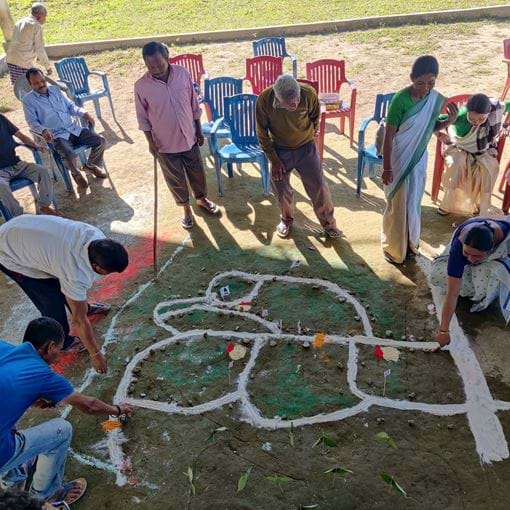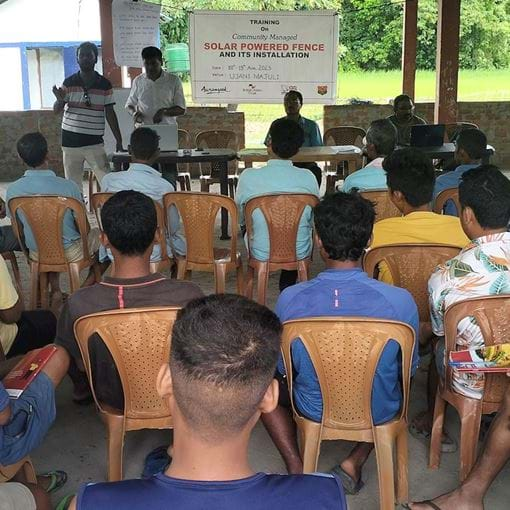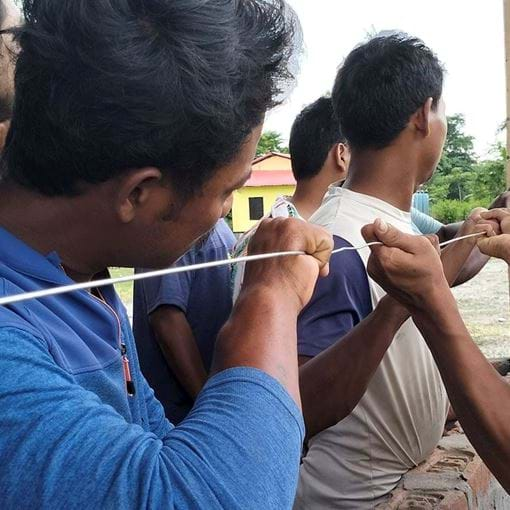The IKEA effect: Why community management is the key to longevity in coexistence solutions
You’ll always know when a home has IKEA furniture because the homeowners will tell you, and inform you in great detail about how easy (or difficult) it was to put it together.
The fact is, we value things more when we’ve worked on them ourselves– a phenomenon called the “IKEA effect.” Even if you aren’t a professional, you’re probably going to place a higher value on something you made with your own hands.
The IKEA effect is not limited to furniture, as we have observed in our work mitigating human-elephant conflict (HEC). In Assam and Meghalaya, our partners Aaranyak are working with communities to install solar-powered electric fences.
An elephant never forgets
Electric fencing has been around since the 1960s as a mitigation tool that prevents conflict by keeping animals out of human settlements and agricultural land.
Modern solar electric fences are intended to be seasonal, non-lethal deterrents for animals like elephants, who have excellent memory. These fences are single wired with an electric current running through them.
Elephants that encounter the fence get a mild shock which is not lethal or harmful. So, these elephants remember to steer clear of the “no good, very bad” sting of the electric current and teach their herds what they know.
For the most part, these fences bring about immediate relief from HEC incidents as they restrict the loss of human life and property, and therefore, present fewer reasons for retaliation against elephant herds.
So far, so good.

Inconvenience is a barrier to effective HEC mitigation using non-lethal fences
The issue with electric fencing is that it requires regular monitoring and maintenance to be successful.
Any breaks or issues in the fencing can result in elephants crossing through, and thereby learning that the fence is not a barrier. This can result in disastrous consequences for humans and elephants alike.
Solar electric fences typically need some maintenance including regular cleaning of solar panels, clearing of vegetation, good earthing, and protecting the control unit from water.
However, a community that isn’t engaged, involved, and trained in the installation, monitoring and maintenance of the fencing is going to find the whole thing more trouble than it is worth.

Think about it this way, how long did it take you to get to the gym and stay there? Consistently?
Building a new habit is difficult, even when it’s your health at risk. Worse still, maintaining solar fences is a group project. We all know how those go.
For people to tolerate inconvenience, the benefits of the action must be greater than the short and long term costs.
It isn’t enough that the fences themselves will prevent HEC incidents, buy-in is needed right from the beginning. The act of maintaining the solar fence needs to be about as rewarding as the reduction of negative human-elephant interactions.
Cultivating value through collective action and labour
The IUCN SSC guidelines on human-wildlife conflict and coexistence recommend acting only after planning with people directly affected.
The guidelines suggest that any measures taken to ensure human-wildlife coexistence are likely to be more sustainable if people who are directly affected are involved in the picking and implementing of these measures.
Aaranyak’s system of solar-powered electric fencing involves establishing multiple ‘Village Fence Committees’ to take responsibility for the installation, management, and maintenance of the fences. Communities and their fence committees are trained in all the requisite technical know-how of solar fences (now do you see why we started with talk of Ikea flatpacks?)

Communities must make an effort to learn and install the fences themselves. As a result, their labour enhances the value that the fence has to them.
The increase in the perceived value of the fence makes the effort of maintenance even more rewarding. Communities will then actively maintain their solar fences, their longevity as a tool to maintain human-elephant coexistence.
We’re working with partners around South Asia to implement our goal of expanding effective conservation methods. To learn more about our work and stay up to date on the latest in conservation innovation, sign up here for our newsletter.
By Caroline Abraham, Communications Officer - Conservation
-
[i] https://www.hbs.edu/ris/Publication%20Files/11-091.pdf
[ii]http://ir.jooust.ac.ke/xmlui/bitstream/handle/123456789/2691/Harrison_MitigatingHumanWildlifeConflictsThroughFencing.pdf?sequence=1&isAllowed=y
[iii] https://agritech.tnau.ac.in/forestry/solar_fence_index.html
[iii] https://www.iucn.org/resources/publication/iucn-ssc-guidelines-human-wildlife-conflict-and-coexistence-first-edition
